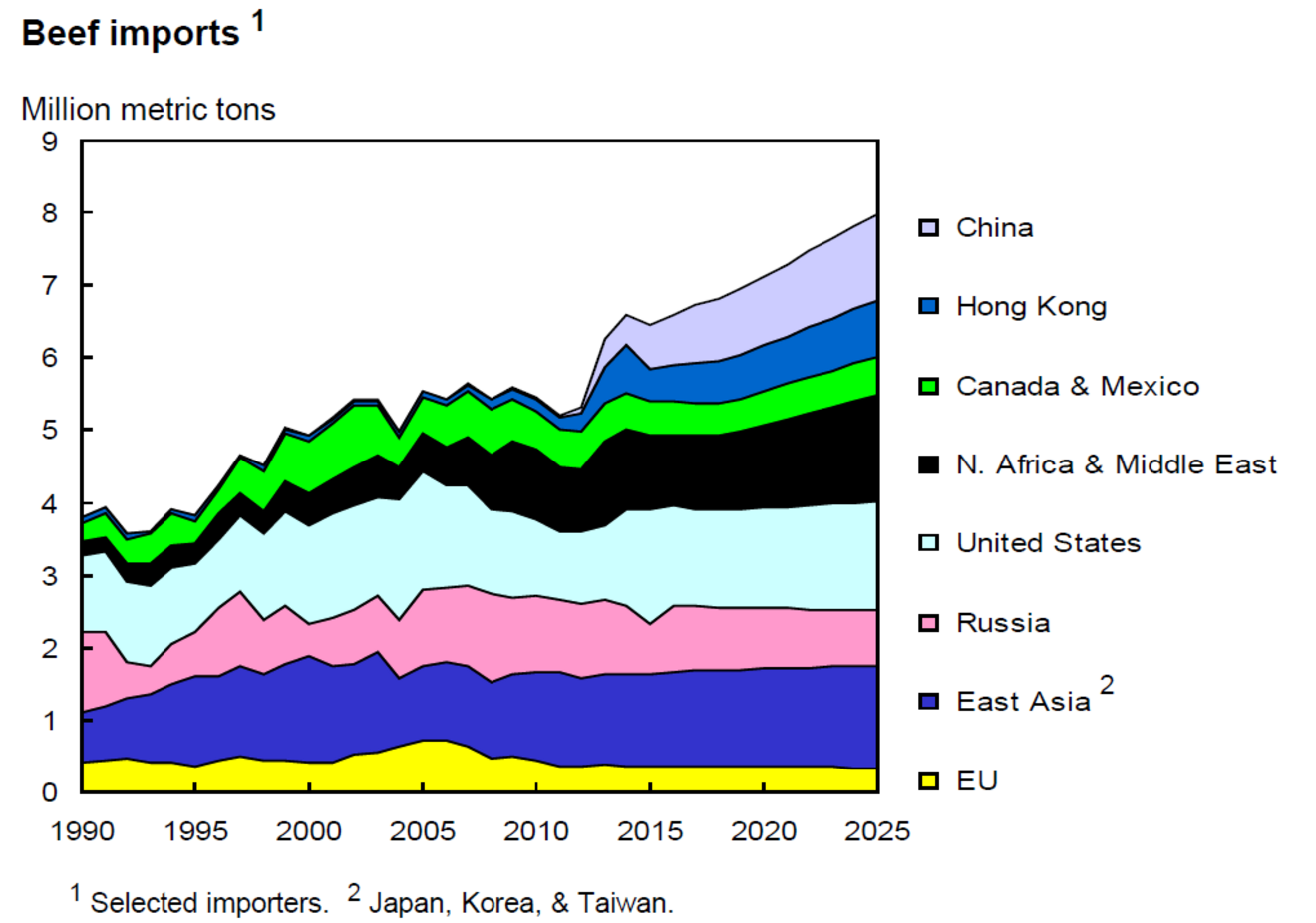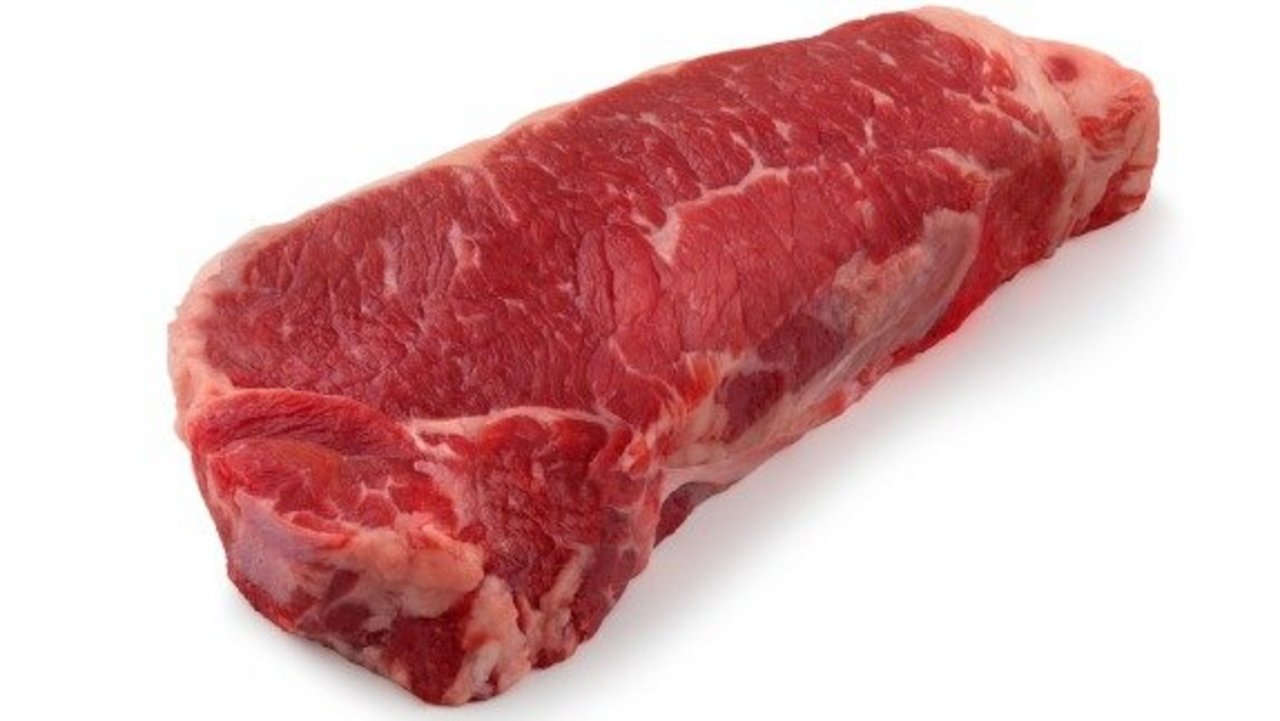Between 2016 and 2025, beef imports by the major beef importing countries are projected to increase by 1.7 million tons, reaching 9.2 million tons in 2025. Exports of lower-priced beef from India and Brazil, mostly to low- and middle-income countries, account for almost two-thirds of the projected increase in exports by the major beef exporters.
• Russian beef imports are projected to decrease from 892,000 tons in 2016 to 771,000 tons by 2025. The United States and EU beef exports to Russia are expected to resume once the country lifts its import ban. After an initial rise, Russian beef imports fall over the projection period due to declining consumption and policies supporting beef production.
• Beef imports by China and Hong Kong combined are projected to increase almost 64 percent in the coming decade, increasing to almost 2 million tons by 2025, due to rising demand for beef which outpaces growth in production. This increase accounts for the largest growth in imports among major beef importing countries.
• Imports of grain-fed beef, mainly by higher-income countries, are projected to rise steadily. U.S. beef exports increase by 40 percent from 2016 to 2025, adding 442,000 tons.
• U.S. beef imports, primarily of grass-fed, lean beef for use in ground beef and processed products, rise slowly during the projection period. The United States is projected to remain the world’s largest beef importer, with beef imports up by 8.4 percent over the next decade.
• The Middle East and North Africa region, with fast population and income growth, is projected to increase beef imports from 1 million tons in 2016 to over 1.5 million by 2025, which is an average annual growth rate of 4.5 percent annually.
• Growth in Mexican beef imports is projected to resume in 2018. Much of Mexico’s imports consist of higher valued, grain-fed beef from the United States. Mexico’s beef imports will increase by 3.5 percent annually to about 224,000 tons by 2025.
• Countries of Southeast Asia maintain strong income growth, leading to a 35-percent increase in their beef imports from 2016 to 2025.
USDA Long-Term Agricultural Projections: World Beef Imports
Mondo

